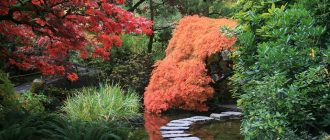Discover the uniqueness of Japanese maple leaves and the variety that the breed is full of.
One of the miracles in the creations of God are the leaves that we find on trees. There are no two leaves even on the same tree that have the exact same design. In fact each leaf on each tree has a design that is different from the other. The category of trees classified as Japanese maples sports a wide variety of leaves and that is one of the reasons for their popularity.
The different kinds of Japanese maple trees sport different kinds of leaves. The laceleaf Japanese maple is one of the most popular varieties within the category. They are specifically popular because of their leaf designs. The leaf lobes on this maple tree are very narrow and serrated at the same time. This is what gives the leaves of this particular tree a lacy appearance.
The maple tree variety sports a wide variety of colours as well. The colour palette ranges from pink to red and yellow to green with some of them even sporting awe inspiring purple colored leaves.
Certain cultivars have leaves that sport extremely linear lobes that are dissected towards the base. The leaf lobes are void of any serrations. This is one of the characteristics that make such leaves different from those found on the Japanese laceleaf maple tree.
Japanese maple trees that do not exceed the maximum height of six feet are classified as dwarf maple trees. Although the same tree that may grow to a height of 20 feet can be grown in a manner that forces it to be dwarfed this brings about a change in the structure of the leaves.
The leaves on the dwarf variety of Japanese maple trees are smaller in size and relatively simpler. Yet each variation has its own wonders that can only be realized on closer and detailed observation. You will find that dwarfing of the maple trees brings about a change in the texture as well as the design on the leaves.
Since the demand for smaller gardens has increased the demand for dwarf trees has also increased. This has led many people to appreciate the leaves of the downsized trees. The maple can even be scaled down to bonsai size which brings about drastic changes in the structure, texture, colour and overall design of the leaf.
When it comes to the variegation within Japanese maples they can be classified in two categories. The leaves are often in part or in full pink, yellow or white in colour. The leaves often feature tiny dots throughout the leaves that have given them the title of being sand flecked.
If the leaves of the Japanese maples are exposed to constant sunlight they tend to lose their colour. In fact they receive a sun burn and become discoloured. There are however certain varieties of the Japanese maple that are immune to the negative effects of the suns rays.
The leaf structure on the Japanese maple is often times the element that becomes the deciding factor for individuals making a choice of a particular tree for their homes.





